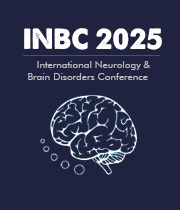Title : A clinical approach to managing acute encephalopathy without a diagnostic MRI
Abstract:
Introduction: MRI is an important diagnostic tool in the diagnosis of acute mental status changes. In this report, we present the workup for a patient with acute encephalopathy and abnormal neurological exam who had a pacemaker incompatible with MRI. Results of CT, EEG, EMG, CSF, and serum studies did not yield a diagnosis.
Case: A 73-year-old male presented in critical condition with altered mentation, intermittent lower extremity myoclonus, right arm dystonia, head turning, quadriparesis, mild thrombocytopenia, and fever, without known cause. Social history noted hoarding, an unkept home, and a night-fishing hobby. Head CT was unremarkable, and an MRI-incompatible pacemaker limited diagnostic deduction. EEG demonstrated periodic sharp wave complexes and moderate generalized slowing commonly seen in Creutzfeldt-Jacob Disease (CJD). The CDC and New York Department of Health ran an investigation related to the patient’s exposures following the unexpected death of two individuals who were canning meats with him days earlier. Botulism antitoxin was given without improvement; EMG showed diabetic axonal neuropathy without evidence for neuromuscular junction disease. CSF was not revealing for CJD or infectious etiologies. Despite lack of diagnosis, he showed gradual improvement in mentation and motor function in the ICU and was discharged to rehab.
Discussion: CJD was initially suspected given the presence of myoclonic jerks and associated EEG findings. While the 14-3-3 protein was negative, documented cases have revealed negative CSF studies premortem but positive CJD on western blot during autopsy. Encephalitis remained high on the differential given thrombocytopenia and fever but could not be confirmed without MRI. Toxin exposure was considered, despite negative heavy metal and botulinum toxin tests, as some cases report reversible encephalopathies following discontinuation of various drugs.
Our patient’s neurological improvement without a targeted intervention likely demonstrated a reversible etiology. Following the standard of care workup for unspecified acute encephalopathy when the diagnostic toolbox is limited may provide therapeutic, rather than diagnostic, utility. This workup provides important considerations for improving neurological function in patients with symptomatic decline without definitive diagnosis.



